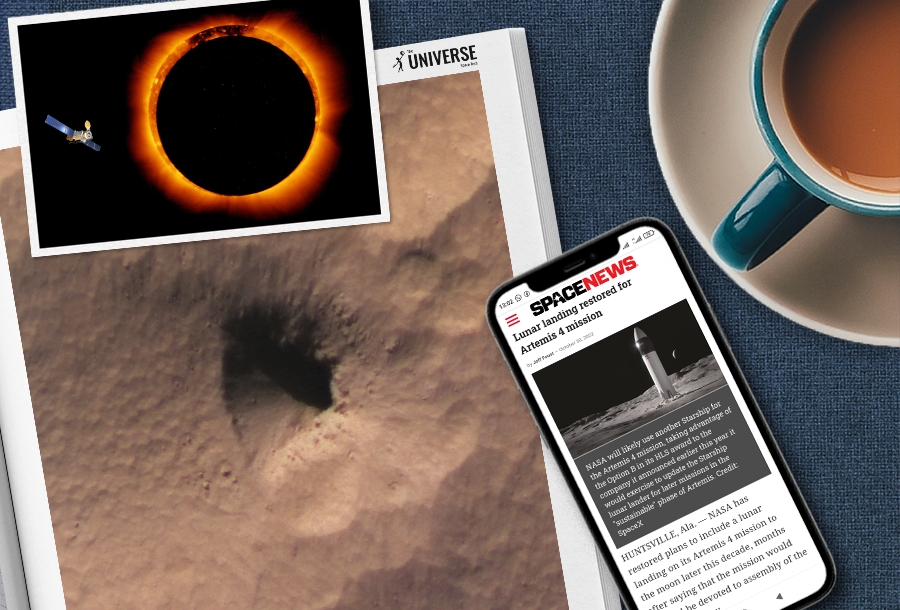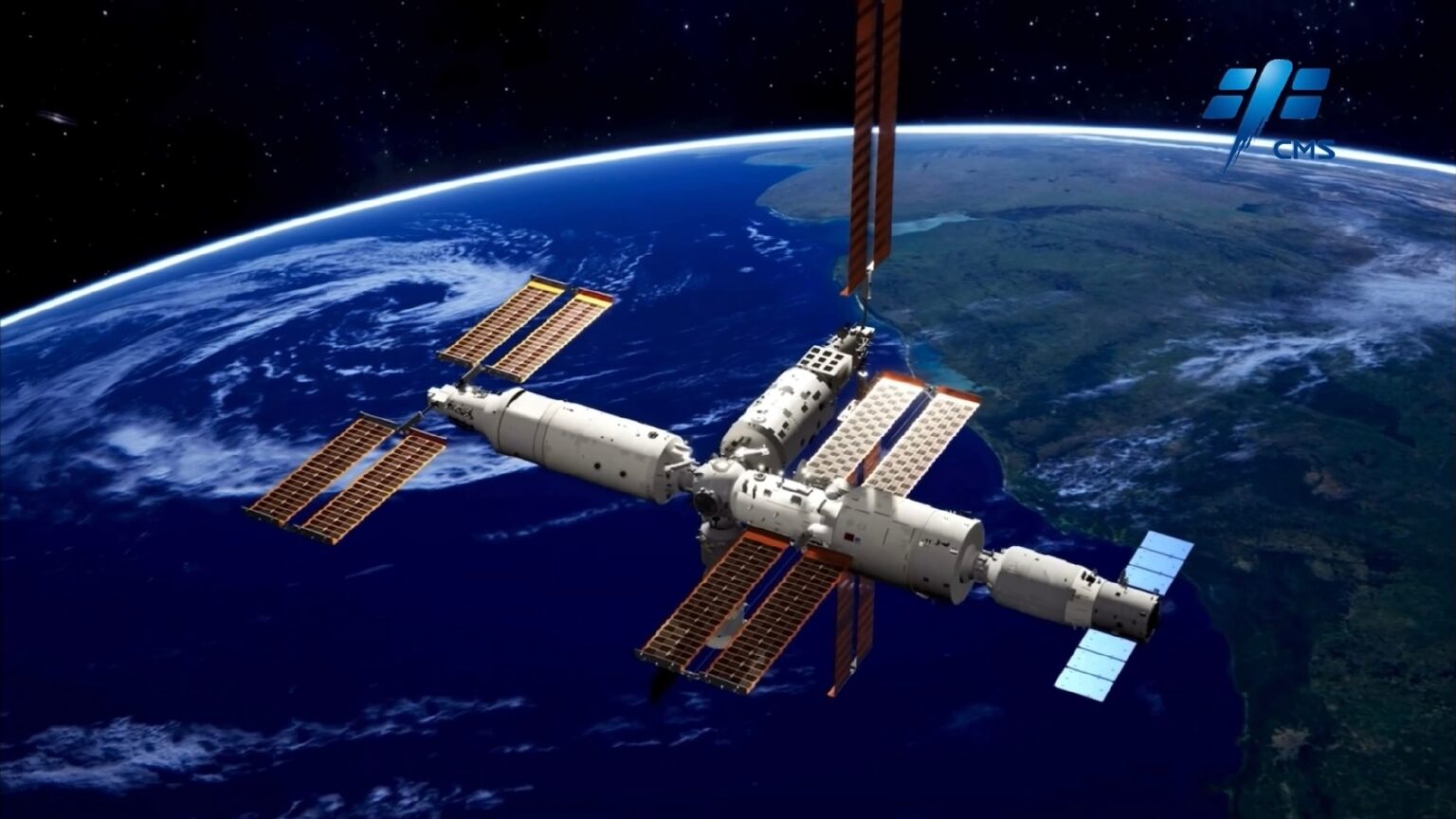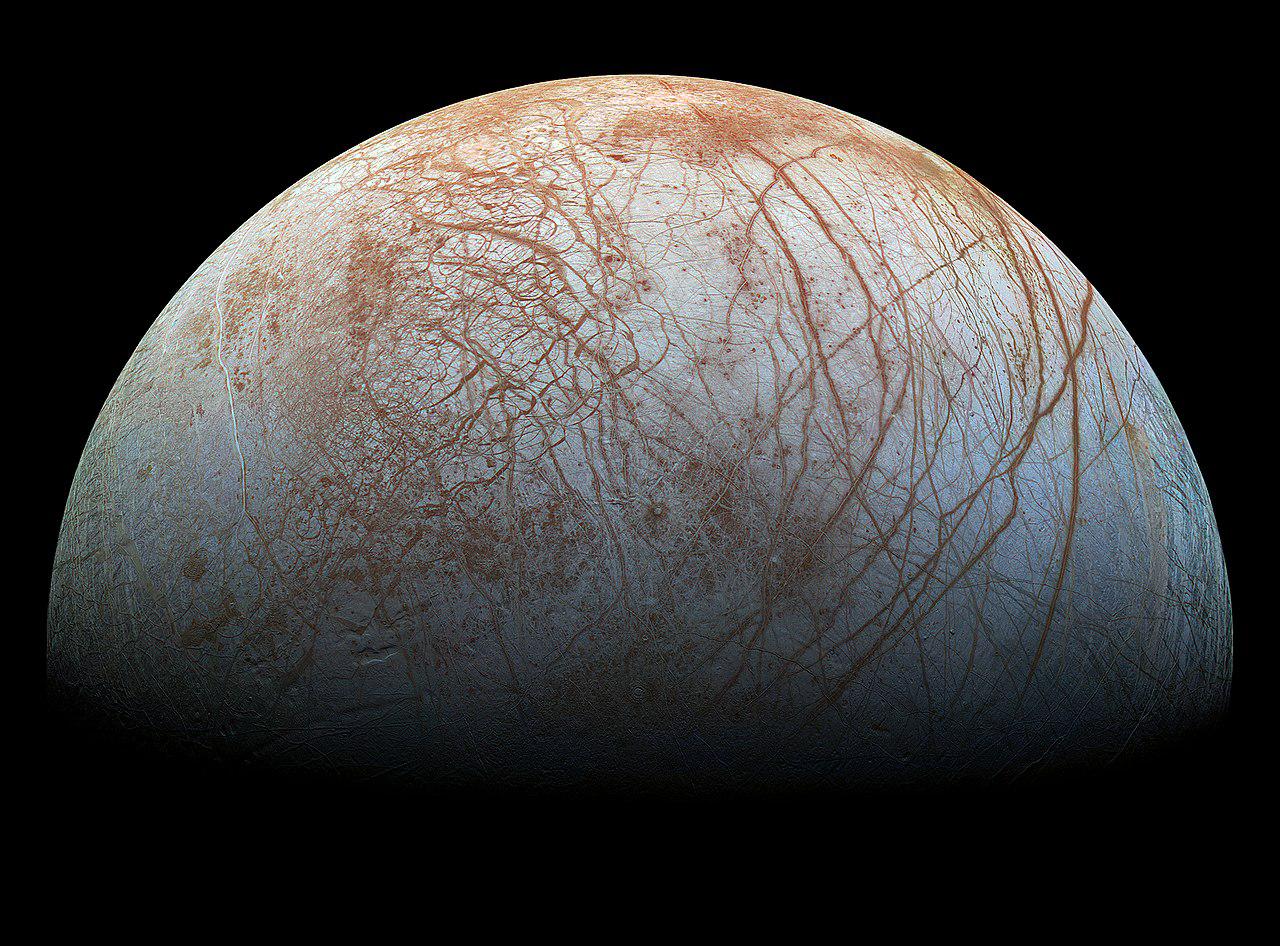Selection of the most interesting space news for the week: The Artemis 4 mission plans to land on the Moon; the Hinode Observatory filmed a solar eclipse from space, and we tell you how ice appears on celestial bodies and what conditions are needed on the planet so that it turns into water.

“There’s as many atoms in a single molecule of your DNA as there are stars in the typical galaxy. We are, each of us, a little universe.”
― Neil deGrasse Tyson, Cosmos
Comfortable caves found on Mars for the first astronauts
A team of researchers from the Geological Society of America (GSA) held a presentation where they identified nine caves that, in their opinion, are the best places for the first colonists to live on Mars. These grottoes are large enough that they can provide future researchers with the necessary opportunities for a comfortable life and create protection from the harsh environment of the planet’s surface. Mars is a rather inhospitable place for humans: the temperature on the planet can drop below -100° C, the atmosphere is incredibly thin and there is no ozone layer that passes harmful solar radiation. The researchers studied 1,000 caves identified by NASA’s Mars Odyssey and Mars Reconnaissance Orbiter, and selected nine potentially habitable by future astronauts. These caves are located 100 km from the future landing sites and at an altitude of no more than 1 km.
Found a shell-less star
For the first time, researchers have discovered a star that has completely lost its shell. Stars consist of nuclei, inside which thermonuclear reactions take place, and outer shells. Theories admit that the luminaries may lose them due to various factors. However, until recently, researchers have not found such objects. Scientists discovered such a star by observing the γ Columbae binary system. It is located at a distance of 870 light-years from Earth in the direction of the constellation of the same name. According to the researchers, the original mass of γ Columbae was 12 times the mass of the Sun. However, in the course of some event, it lost its shell. All that remains of the star is a pulsating core, which has a mass of only five solar masses.
NASA shows a striking look at the solar eclipse from the Hinode satellite
The last solar eclipse in 2022 occurred on October 25. The astronomical event was witnessed by residents of Europe, the Middle East and some parts of Africa and Asia. Eyewitnesses of these regions of the planet could see how the Moon covers the Sun from 15% to 85%. But the best angle for observing the event is available to astronauts in orbit or satellites. The Hinode Observatory, which is jointly managed by the space agencies of the United States, Japan, Great Britain and Europe, recorded a video of the solar eclipse from space in the maximum approximation. Hinode recorded three different types of eclipse within three hours. Through an X-ray telescope, the satellite sees the Moon completely black, and the Sun is burning scarlet in the background.
Planets can make stars look younger
Scientists have proved that planets such as “hot Jupiters” can accelerate the rotation of stars around their axis. This causes them to release more energy in the X-ray part of the spectrum, which is considered a sign of a young star. When a star ages, it is always possible to track how the number of flashes on its surface decreases and the proportion of energy it emits in the X-ray range decreases. But when a very massive planet is in orbit close to the surface, its gravity forces the luminary to rotate faster and these indicators begin to increase again. It looks like the star has “rejuvenated”.
Artemis 4 mission will still involve landing on the Moon
During the Artemis 4 mission, which is scheduled to take place before 2027, astronauts will still descend to the surface of the Moon. It will use the Starship lander Option B. Also, the I-Hab residential module will be launched into the orbit of the Earth moon.
NASA’s initial contract with SpaceX provided for the use of at least the third mission of the Starship module Option A. However, back in March, it became known that instead of it, Option B, designed for longer and more complex missions, will be used to return people to the Moon during Artemis 3. NASA agreed to finance its development and construction and announced that if it proved itself well during the third mission, it would be used further. So far, Artemis 3 is scheduled for no earlier than 2025, Artemis 4 for 2027, and Artemis 5 for 2028.
Photo of the week

A group of independent investigators GeoConfirmed published satellite images of the airbase Veretye in the Pskov Oblast. They show at least three Russian Ka-52 helicopters destroyed as a result of sabotage.
Interesting figure — 65 tons

On October 31, the Long March 5B rocket was launched from the Chinese Wenchang Cosmodrome. The laboratory module “Mengtian” was on board. Just 13 hours after launch, it successfully docked with the Tiangong orbital station. Thus, China has completed the assembly of its space outpost. Now its mass is over 65 tons. The station is designed for the permanent stay of three teikonauts and can provide the presence of six people during the “shift change” of the crews.
Something to read on the weekend

The most common chemical element in the universe is hydrogen. It is found there both in atomic form and in the form of diatomic molecules (H2). Estimates of its concentration within the Milky Way give a value of 739 thousand atoms per million, that is, almost 74%. Stars and giant planets are mainly composed of hydrogen. In the article “Ice as an indication of life” we tell how ice appears on celestial bodies and what conditions are necessary on the planet for it to turn into water.
Follow us on Twitter to get the most interesting space news in time
https://twitter.com/ust_magazine

